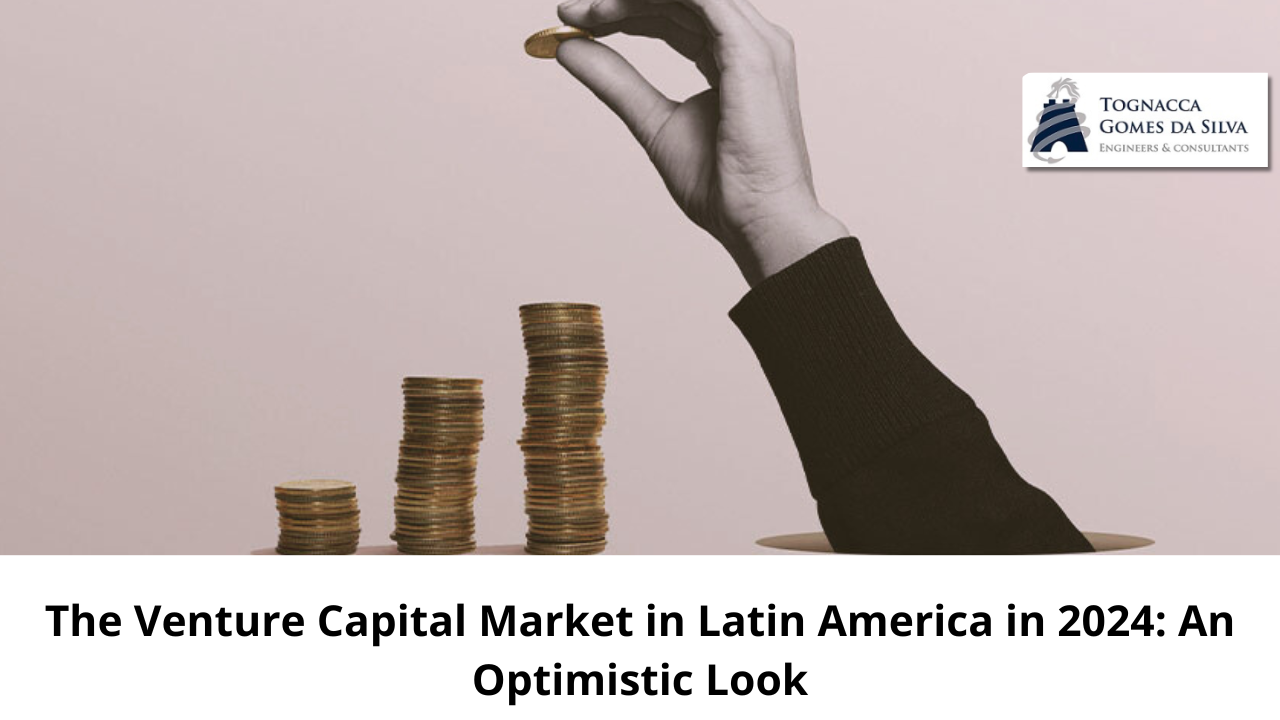As 2024 comes to an end, many say that the venture capital market in Latin America has had another difficult year. However, there are optimistic counterpoints to this view. In this last column of the year (or first of 2025) I look at why we actually had a reasonably good year — as we look for better prospects.
External factors and the favorable situation
The year 2024 highlighted the consolidation of Latin America as an attractive destination for venture capital. We did not reach this level just because of our excellent entrepreneurs, but because of a combination of structural conditions. It is worth mentioning that, when we are talking about Latin America, we are basically talking about Brazil and Mexico. According to data from Sling Hub, since 2021 Brazil has attracted between 50% and 70% of the venture capital dedicated to the region, with Mexico as the main supporting player.

Evolution of total funding rounds
To understand the growth in Latin America’s attractiveness, it is crucial to analyze the scenario of other emerging regions. According to the International Monetary Fund (IMF), emerging markets include Latin America, Southeast Asia, China, India, Russia and parts of Africa. These markets represent an important diversification strategy for large venture capital1 funds, mostly North American. Some of these funds have regulations that determine the mandatory allocation of a percentage of capital in emerging countries, while others are entirely dedicated to these regions — or are encouraged to do so as a diversification strategy. Regardless of the approach, it is a fact that, in one way or another, part of the resources must be directed beyond the traditional markets of the United States and Europe.
Currently, private equity2 and venture capital funds have record levels of dry powder — capital committed but not yet invested. Globally, these funds held approximately US$2.62 trillion as of July 2024, representing a significant increase from previous periods. Most of these resources are directed to the United States and Europe. However, a significant portion needs or should be allocated to emerging countries, according to the reasons mentioned above.

The reduction in attractiveness in other emerging regions
The growing geopolitical tension between the United States and China, worsened by the recent election of Donald Trump, has hampered the flow of American investments in the Asian region. Data from PitchBook and Global Data point to significant drops in venture capital investments in China: from USD 69.5 billion in 2022 compared to USD 136 billion in 2021. And a 36% reduction when we compare the period from January to November 2023 against the same period in 2024.
Southeast Asia’s strong economic dependence on China has negatively affected these markets, reducing investor appetite in these regions as well. Many of these countries have China as their main trading partner. Therefore, a large part of the demand and, consequently, the revenues of Southeast Asian companies is directly linked to the consumption of the Chinese population.
Russia remains an unviable destination due to the war, while Africa remains unrepresented in the technology sector.
The case of India, in turn, is notable for its performance in the technology market in 2024. In recent years, the country has consolidated itself as one of the main destinations for venture capital resources among emerging markets, and Bain data indicates that the region’s technology sector has gone through a cycle: maturation, followed by optimism, boom due to Covid and recalibration that culminated in a good momentum of more mature and very successful companies in 2024.

The success of Indian companies attracted intense competition among American funds for the best assets, which led to a general increase in prices (valuations) and multiples in the region. In 2024, contrary to the global trend, India registered admirable IPOs in the technology sector, such as those of Swiggy, Ola Electric and FirstCry. The public market exerted a strong influence on the private market, further boosting the value of promising private assets. As a result, many venture capital funds adopted a more cautious approach — at the beginning of the decade, with ample capital available and low interest rates, there was an increase in investment, and venture capital funds didn’t care if companies didn’t have good unit economics;3 in recent years, however, this caution comes on the heels of a desire for companies that are already profitable, with a proven business model.
Until November 2024, India received USD 16.8 billion in investments, an increase compared to 2023, but a considerable reduction compared to 2022. The fact is that, in relative terms, Indian technology companies have significantly higher valuations than similar companies in other parts of the world, which reduces their attractiveness for venture capital funds.
Latin America in the spotlight
With the global situation described, Latin America has emerged as an attractive alternative destination for these resources that “need” to be invested in emerging countries. Entrepreneurial strength, growing digitalization, adjusted valuations, and an increasingly technological and early adopter population have created favorable conditions for the return of risk capital to the region.
According to CB Insights, the region attracted around USD 4 billion in 2024, an increase from USD 3.3 billion in 2023. Brazil and Mexico led, capturing approximately 50% and 30% of the total, respectively. This return of investment to Latin America had the impact of maintaining a tech rotation — the more investment by established US funds in companies that are just starting out, the better for the region and for the maturation of the technology ecosystem as a whole.
2024 Highlights: Bigger rounds and new entrants
Significant rounds marked the year, showing greater investor confidence in local theses. Among the highlights are:
Asaas: startup that offers digital accounts for small and medium-sized companies with the support of management tools. It raised USD 148 million in a round led by Bond, a renowned Silicon Valley fund, in its second investment in the region in 2024. The first was in CRM Bonus, in May this year.
Celcoin: financial infrastructure platform for the inclusion of financial services in underserved areas. It received USD 125 million from Summit Partners, a Boston giant, which debuted in Latin America with this investment.
Tractian: company that combines software and IoT to monitor and optimize the operation of large industries. Raised USD 123 million with participation from Sapphire Ventures, also in its first operation in the region.
Furthermore, Brazilian funds, such as Upload, Across and Cloud9, showed an appetite for large rounds, while experienced investors in the region, such as Warburg Pincus and Riverwood, reaffirmed their conviction by also participating in important rounds.
Outlook for 2025
With the market showing signs of recovery, 2025 should follow a positive trend. Investments are expected to remain in the USD 4 billion range, with larger rounds as companies mature. The secondary market should gain traction, enabling exits for early stage funds and encouraging new rounds, such as the entry of Warburg Pincus into Contabilizei’s corporate structure — allowing early stage funds, such as Kaszek, to exit.
Furthermore, with a 27% increase in M&A in 2024, according to data from Deloitte, greater activity is expected in the mergers and acquisitions market, driven by foreign companies looking for acquihires (a strategy in which one company acquires another, mainly to hire its talents, instead of acquiring its products or services) to establish a local presence, and by the consolidation of startups that will join together to have greater muscle for a future exit.
Time will tell the practical consequences of the scenario we described. However, if 2024 has shown us anything, it is that the venture capital market in Latin America still has reasons for a more positive outlook.
( fonte: MIT Technology Review)



